There are natural phenomena that you do not know about, because they rarely occur or because you are in a geographical location where abnormalities do not occur.
These phenomena are either very strange or very glorious, but witnessing them once can leave strong impressions in us that we will never forget.
1. Water whirlpool
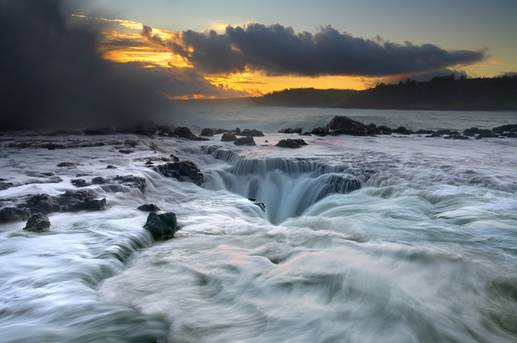
A water tornado is the phenomenon of a very large and extremely powerful vortex appearing on the surface of the water, capable of attracting anything that falls under its control and sinking it to the bottom of the water. The first described tornado area was in Moskstraumen (Netherlands), caused by two very strong ocean currents. That seabed is the intersection of two underground water currents expressed as those two ocean currents.
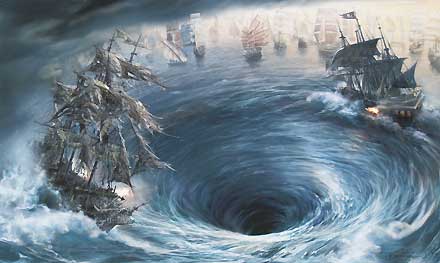
2. Fire Rainbow
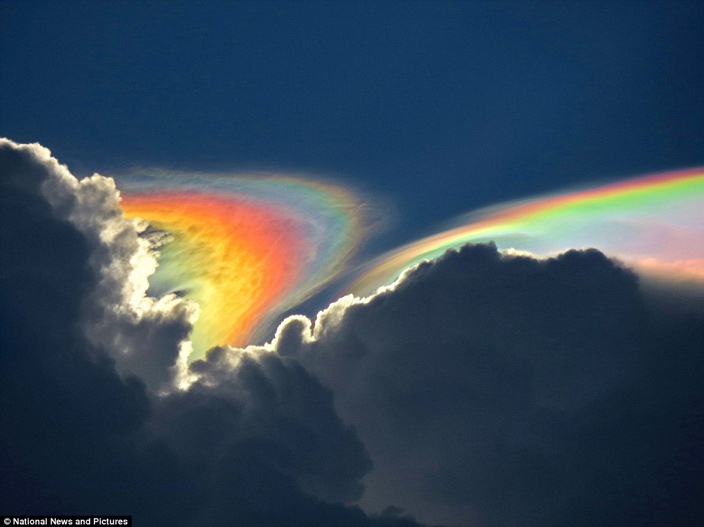
The term “fire rainbow” can be misleading. In essence, it is an arc surrounding the horizon (circumhorizon arc). It is primarily an ice halo, caused by ice crystals located in clouds very high in the sky. This color show scene is not very rare, often seen in near latitudes in the summer, but rarely appears in Central or Northern Europe.

Of course, it doesn’t form like rainbows like we usually see. Light passes through the hexagonal ice crystals vertically and through the nearest horizontal bottom surface. When rearranged in a straight line, it makes the entire cloud shine in seven rainbow colors.
3. Waterspouts
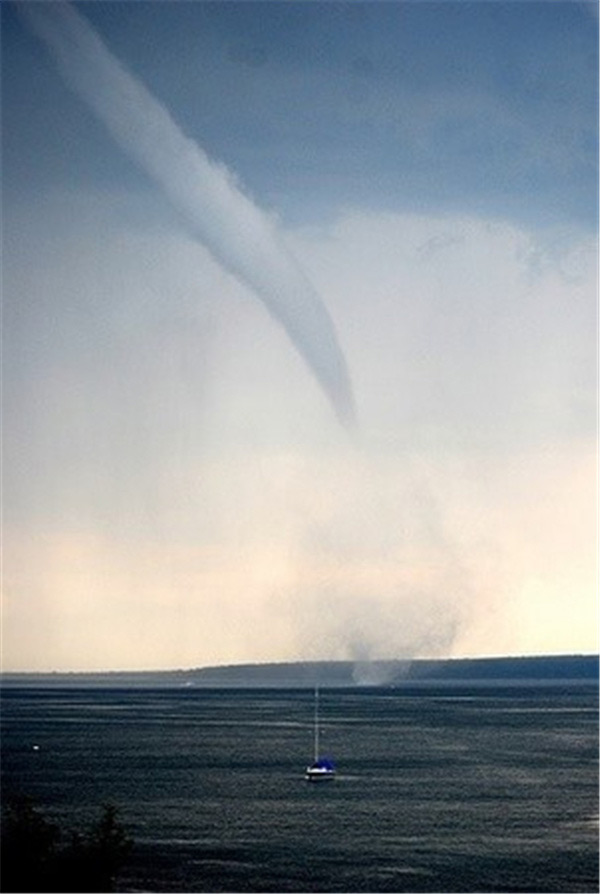
A waterspout is a circular column of water rising from below the surface of the water, linking each block together to form a layered cloud.
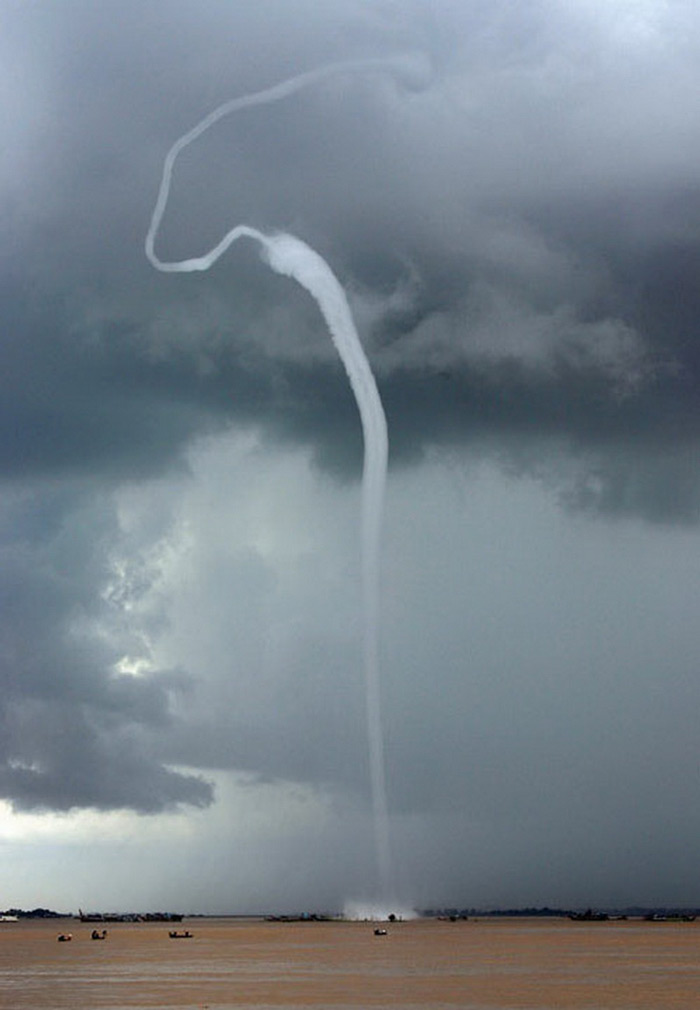
Usually they are weaker than tornadoes on the ground, but there are also tornadoes that are much more intense and sweep water into the sky with very high speed and great power.
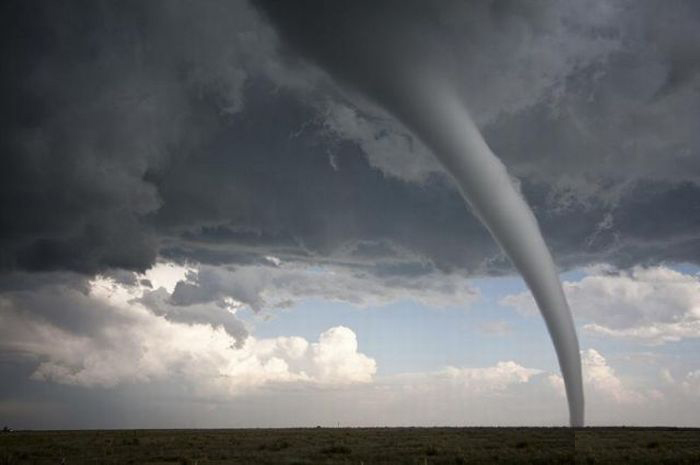
They may or may not be tornadoes. When they are not tornadoes, they are weaker and not as dangerous because the wind speed is less than 30 m/s. In the type of tornado that is a tornado, the tornado is the “core” of the tornado. The volume of water swept by a tornado is huge and if you have witnessed it once, you will never forget it.
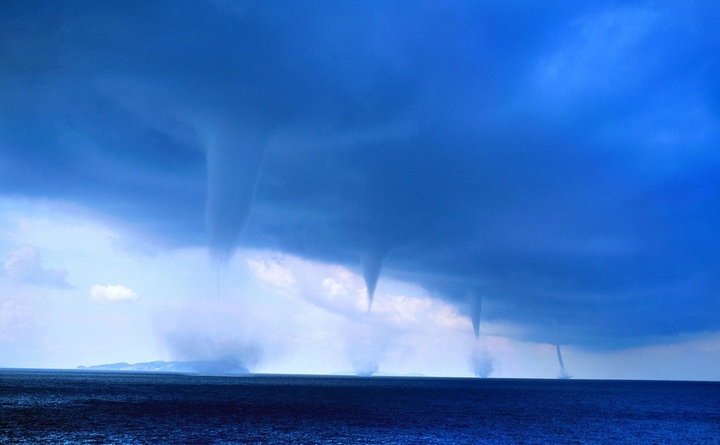
The “cousins” of waterspouts are “snowspouts” or “icespouts” . “Snow tornadoes” form when a tornado occurs during a snowstorm. It is so rare that people have only taken 6 photos of it from the past to present.
4. Fish rain in Honduras
This phenomenon is extraordinary. Yet for more than a century, it rains fish once every year.

Every year, between May and July, a dark cloud appears in the sky, followed by lightning and heavy rain lasting 2-3 hours straight. At the end of the rain, when going out into the street, people catch hundreds of fish still alive, struggling on the ground, which of course will become the proud dish of lucky people.

The reason has not yet been explained, but everyone believes that strong winds and tornadoes brought the fish into the sky, traveling up to 200 km. All are not sea fish, but freshwater fish. National Geographic magazine sent a delegation to survey. They saw that they were not fish from the area, and that they were all blind, so they hypothesized that these fish lived in some undiscovered underground river. Coming to Honduras in the summer, you may not be lucky enough to catch one.
5. Moon rainbow
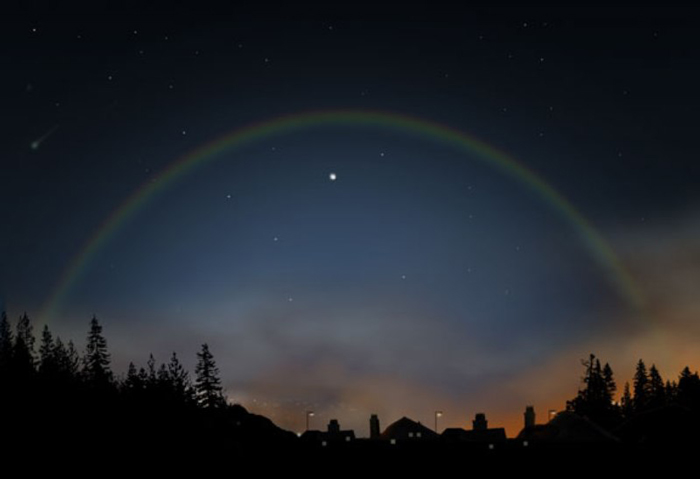
You’ve probably seen a rainbow after the rain many times, but have you seen a rainbow at night? Rare but yes. People call it “moon rainbow” (in English it is called moonbow, lunar rainbow or white rainbow). Of course, the light emitted by the Moon is weaker than sunlight, so the naked eye cannot see the color (or is very faint), making the moon rainbow just a halo of light shaped like a white moon arc.
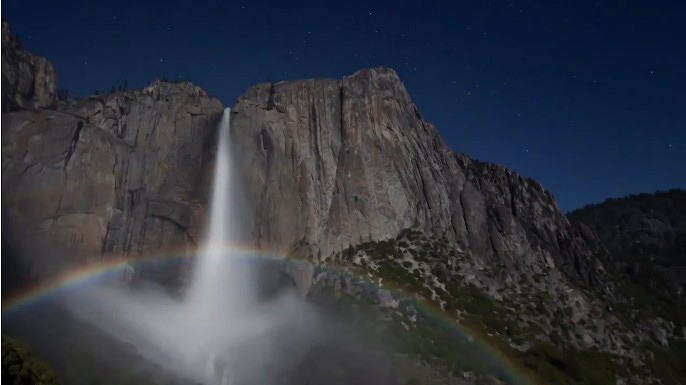
The biggest opportunity for you to admire the moon rainbow is on the night of the full moon or the 16th day of the lunar calendar when the moonlight is at its clearest, the sky is cloudless and rain falls right in front of the moon.
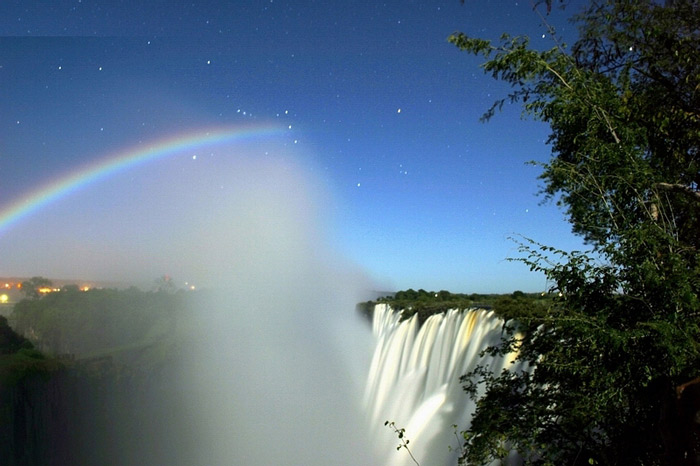
6. Ice field
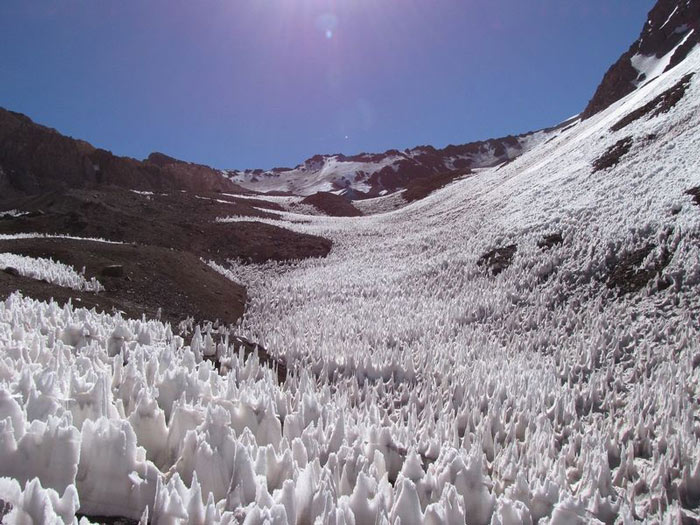
Ice crystallizes into sharp blocks that grow together to form a giant ice field, only seen at high latitudes. The height of icebergs varies from a few centimeters to 2 meters or more. The white, shimmering ice field has fascinated countless researchers since Darwin’s time. This great naturalist first saw and described them.
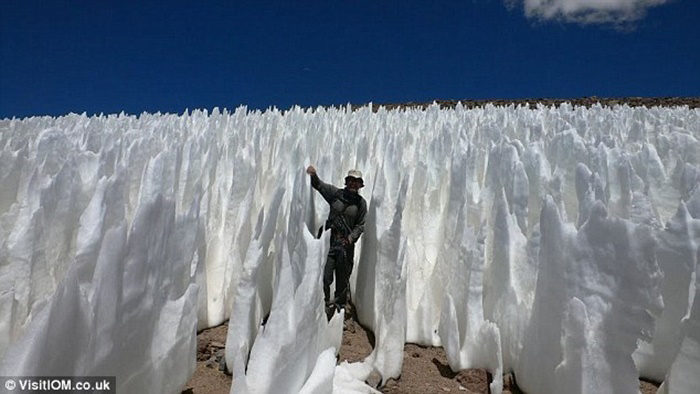
The mechanism of formation of rocky outcrops is quite complicated, due to many factors: the melting process of ice in one place, sublimation in another, making the ice surface no longer flat. Wind accelerates the difference, causing the ice surface to become increasingly concave. The solar radiation reflected unevenly on that concave surface further contributes to the difference to the extreme, making this place a deep bottom, that place a sharp peak, gradually forming an ice field.
7. Supercell
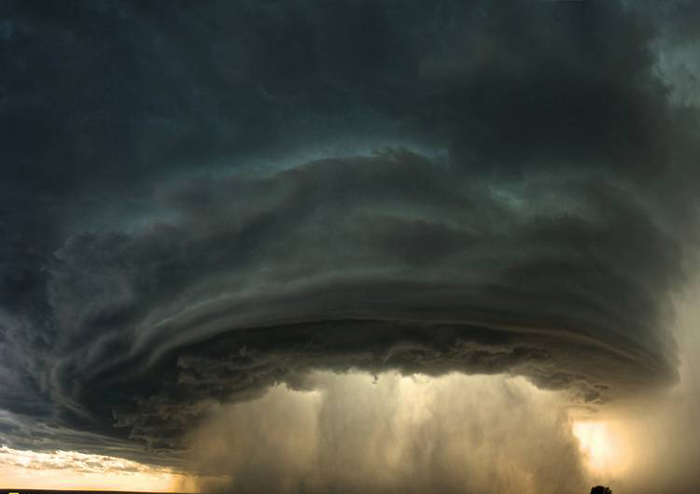
Supercells are rotating streams of air and water sucked from the bottom up during a major thunderstorm. They can appear anywhere in the world, lasting 2-3 hours straight, sometimes splitting in half, into two storms with opposite directions.
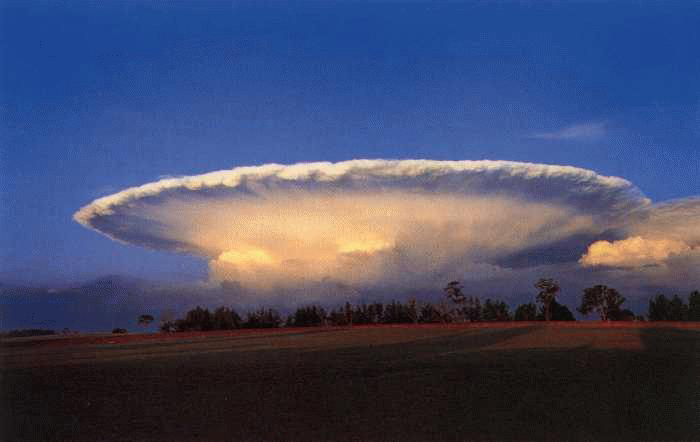
Super thunderstorms often produce hail, or very heavy showers, very strong winds and when directed downward, they carry large ice pellets.
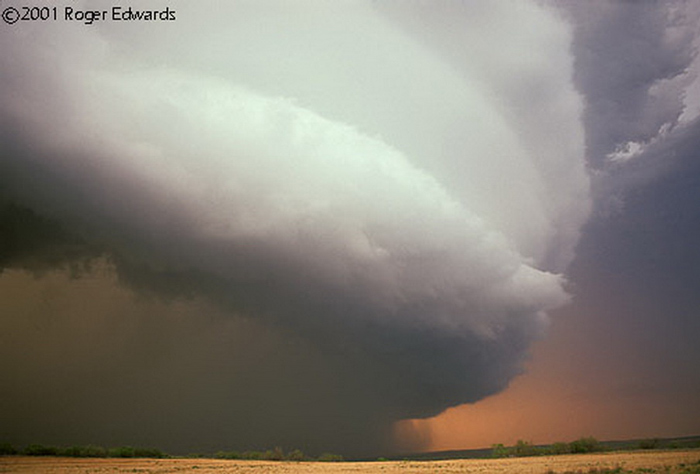
8. Round icebergs
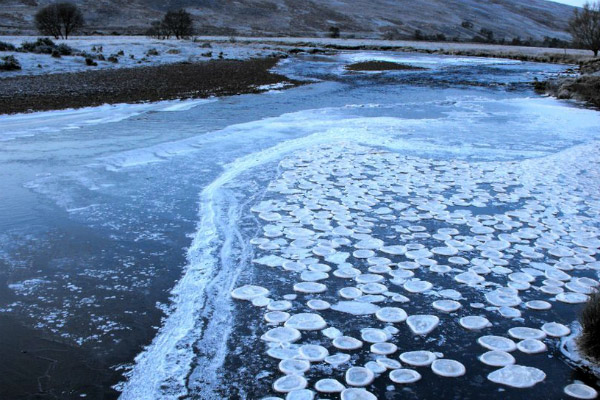
The phenomenon of round ice floes floating on the water surface rarely occurs, only seen in very slow-flowing waters and cold climates such as Northern Europe and America.
There are two types of icebergs, depending on the formation conditions.
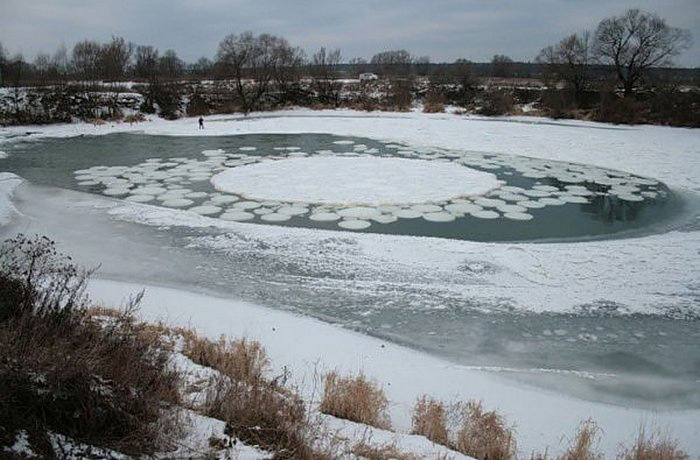
The first type is formed in conditions of no rain and temperatures below 0 o C for many days in places where the river curves. Due to the impact of moving forces, it causes the edges around the ice to break, then erode over time, becoming perfect circles.
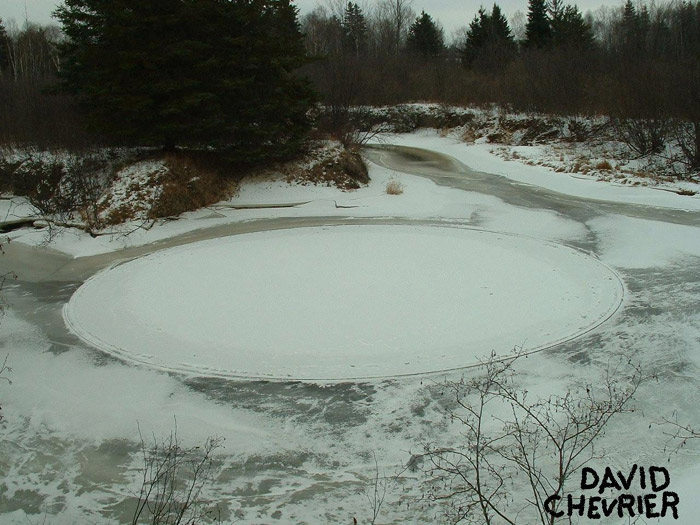
The second type looks even better. They are also basin-shaped icebergs that form in the middle of the river. Sometimes there is water in the middle of a large round iceberg, looking like a pond floating in the middle of a river.
9. Egg-shaped bandage
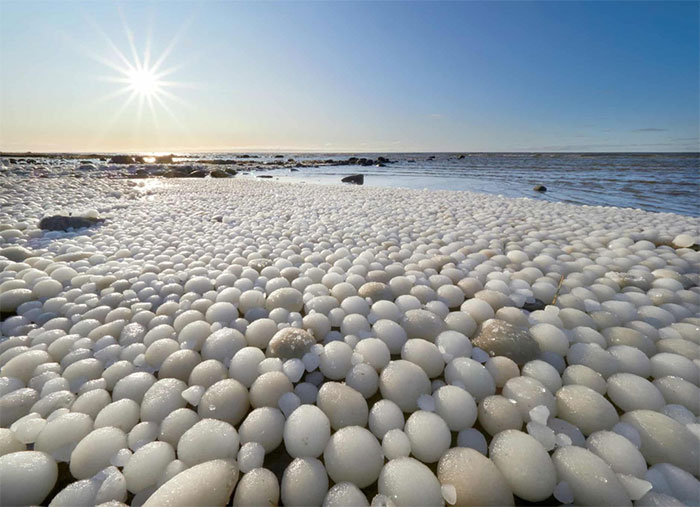
Photo: Risto Mattila.
Round ice eggs covering the beaches in Hailuoto attracted the attention of netizens late last year. According to CNN, this phenomenon is formed because sea water near the shore breaks down the soft ice layer. Melting snow sticks together and accumulates in the supercooled water, then ocean waves cause the ice to spin around and form smooth balls. Ice expert at the Finnish Meteorological Institute, Jouni vainio, said the phenomenon is not common, but can happen once a year under the right weather conditions.
10. Tubular clouds in the Gulf of Carpentaria
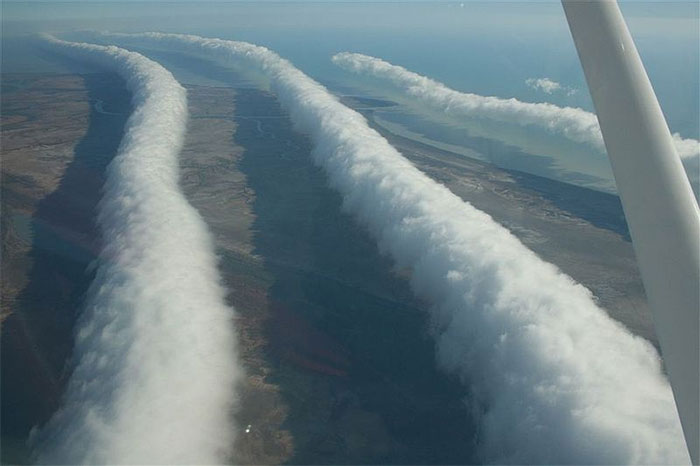
Photo: Wikimedia Commons.
The only place where this rare phenomenon can be predicted and observed periodically is the Gulf of Carpentaria in Australia. Tubular clouds can be up to 1,000 km long, 1-2 km high and usually only 100-200 m above the ground. This phenomenon usually occurs from late September to early November when the humidity in the air is high combined with strong sea breezes.





